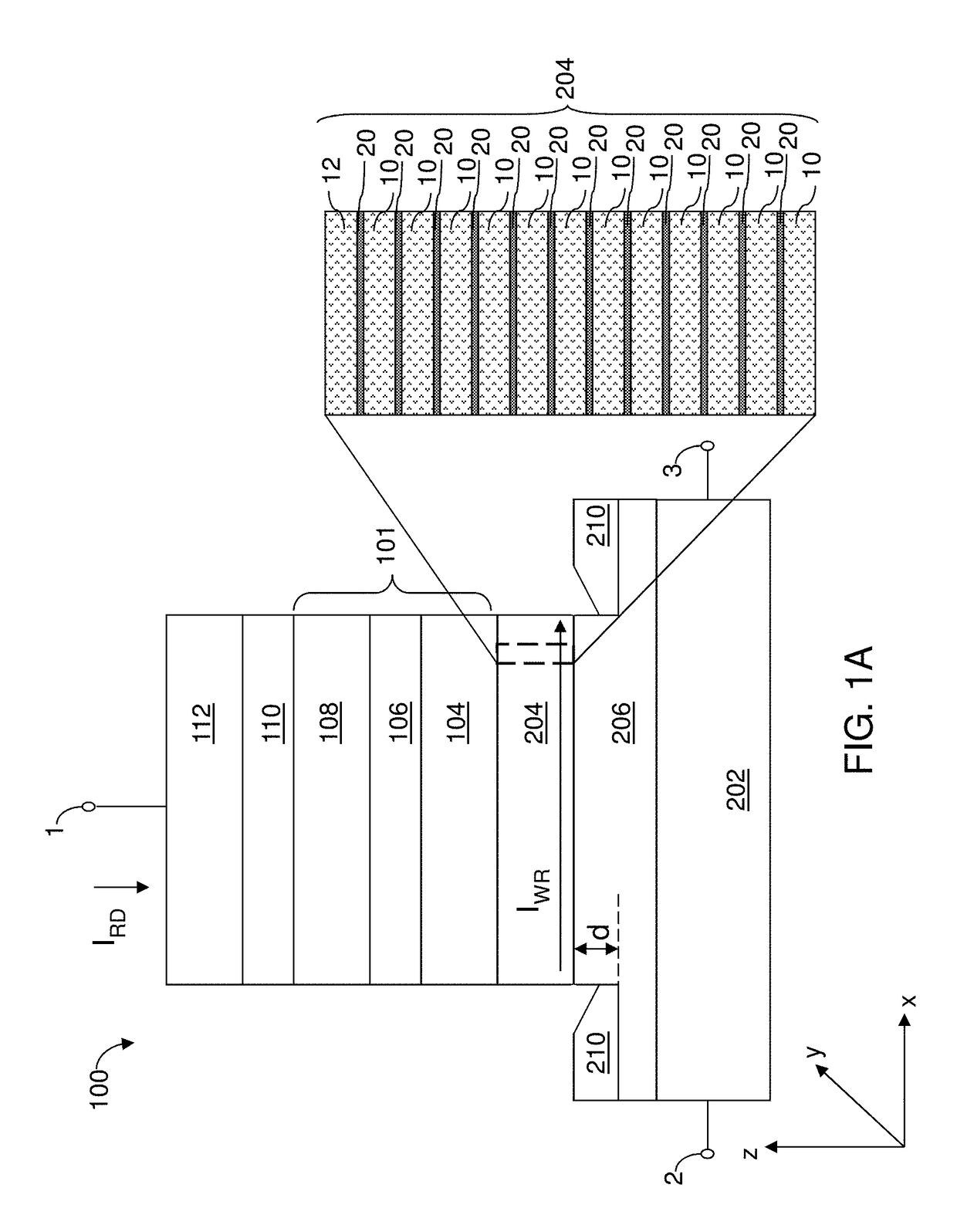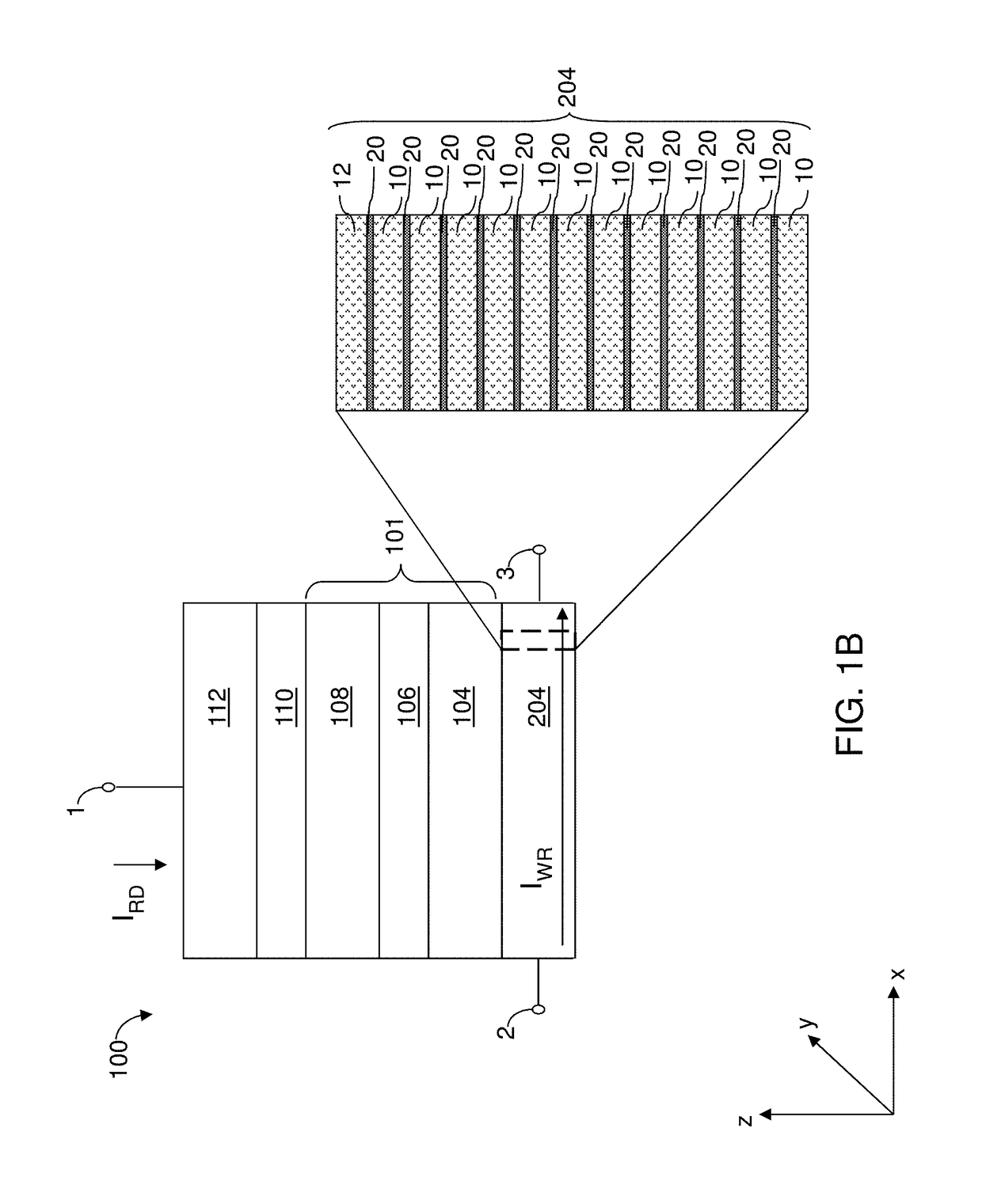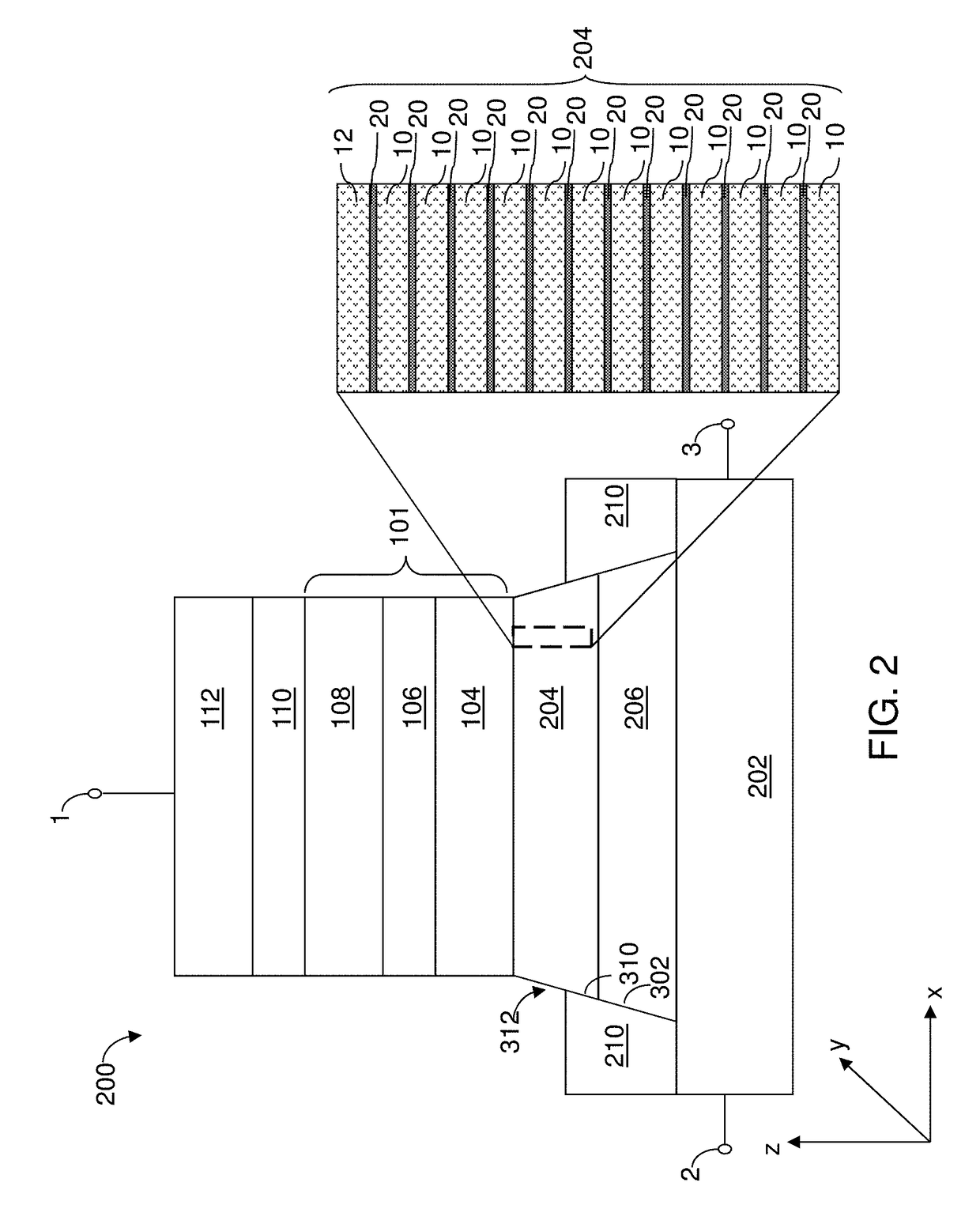Spin orbit torque magnetoresistive random access memory containing composite spin hall effect layer including beta phase tungsten
a random access memory and spin orbit torque technology, applied in the field of spin orbit torque (sot) magnetoresistive memory cells, can solve the problems of neighboring cells being erroneously written, scalding these devices to high densities, and the current required to generate sufficient field to switch the free layer becomes prohibitively larg
- Summary
- Abstract
- Description
- Claims
- Application Information
AI Technical Summary
Benefits of technology
Problems solved by technology
Method used
Image
Examples
Embodiment Construction
[0020]As discussed above, the present disclosure is directed to spin orbit torque (SOT) magnetoresistive memory cells, a random access memory device employing the same, and methods of manufacturing the same, the various aspects of which are described below. The embodiments of the disclosure can be employed to form various semiconductor devices such as three-dimensional memory array devices comprising MRAM devices. The drawings are not drawn to scale. Multiple instances of an element may be duplicated where a single instance of the element is illustrated, unless absence of duplication of elements is expressly described or clearly indicated otherwise. Ordinals such as “first,”“second,” and “third” are employed merely to identify similar elements, and different ordinals may be employed across the specification and the claims of the instant disclosure.
[0021]As used herein, a “layer” refers to a material portion including a region having a thickness. A layer may extend over the entirety ...
PUM
 Login to View More
Login to View More Abstract
Description
Claims
Application Information
 Login to View More
Login to View More - R&D
- Intellectual Property
- Life Sciences
- Materials
- Tech Scout
- Unparalleled Data Quality
- Higher Quality Content
- 60% Fewer Hallucinations
Browse by: Latest US Patents, China's latest patents, Technical Efficacy Thesaurus, Application Domain, Technology Topic, Popular Technical Reports.
© 2025 PatSnap. All rights reserved.Legal|Privacy policy|Modern Slavery Act Transparency Statement|Sitemap|About US| Contact US: help@patsnap.com



